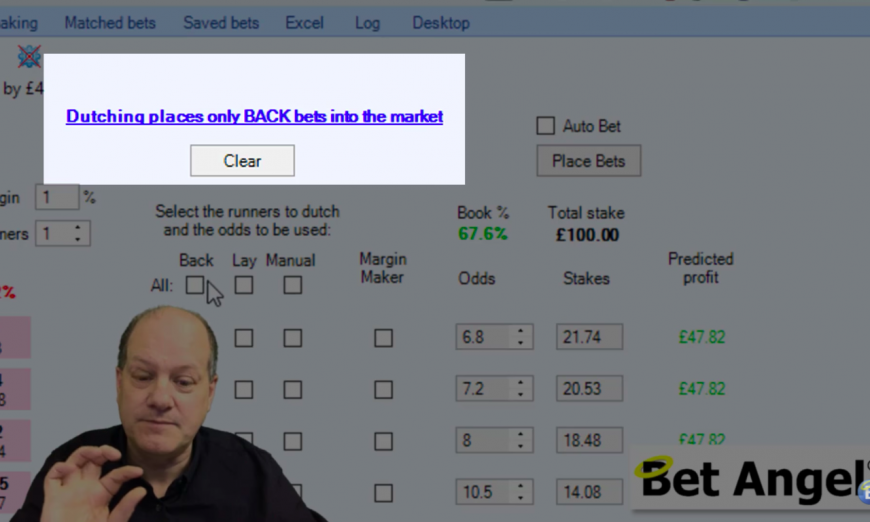Dutching on horse racing
We have covered Dutching before in a number of articles, so read up on those specifics if you want to learn what Dutching is, how to do and how to use the specialist tools in Bet Angel to do perform a dutch bet.
Speaking broadly, Dutching is a viable betting strategy on the betting exchanges now as the book overround is so small. A Dutch bet covers a number of selections in a sports betting market, rather than just one. This will increase your chances because you will win if any of those selections win.
Bet Angel contains an advanced Dutching calculator. This means not only can you make multiple selections with your dutch bet, but you can also set a profit target, varying the profit not just the stake on each selection. But you can drive your risk and reward by varying the amount staked or the number of selections. So it makes for a good tool and strategy.
In this article, we look specifically at a ‘hidden’ feature that will allow you to get more out of any dutching strategy you use.
If you can only back bets then where are there more columns?
Let me show you something. You’ll notice on the dutching screen written in big, bold letters is “Dutching places only BACK bets into the market.”
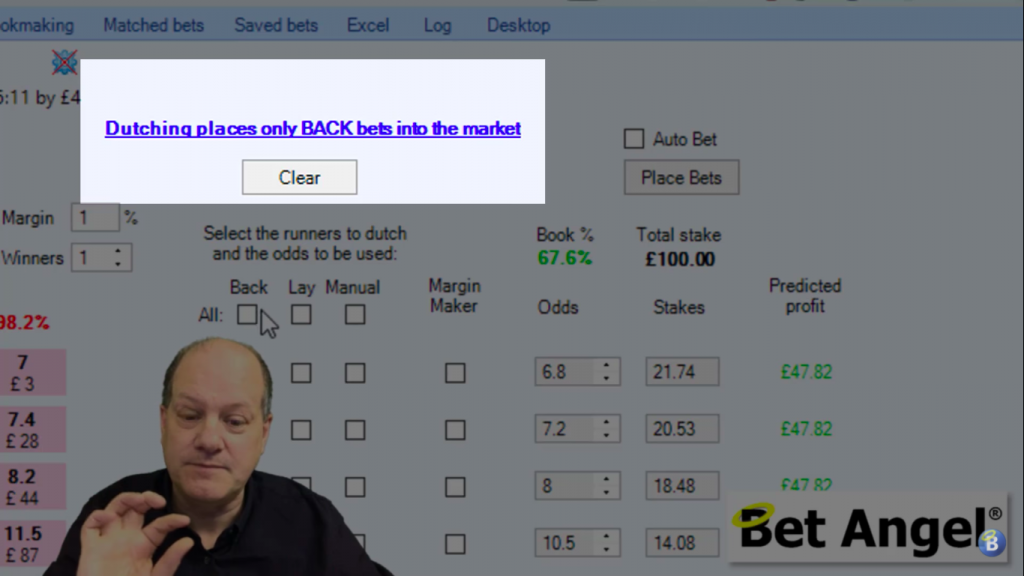
If we actually look in more detail at the dutching screen, the columns we have on this screen show back, lay and manual. So naturally the question of why we have a ‘lay’ column comes to if you can only place back bets into the market?
Well, the answer comes from the book percentage. In the previous example on the other article, we backed six selections for 66% of the book. We’re going to use a stake of £100 and you can see on the righthand side that our ‘predicted profit’ could return £49.
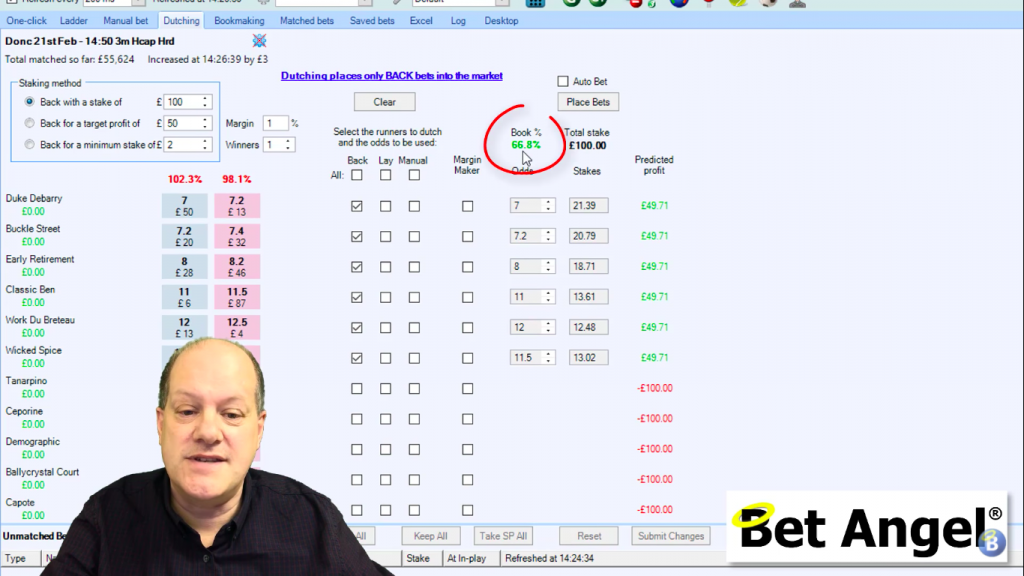
In comparison, we could say we want to return £100, so by changing the back stake for a target profit of £100 (shown in the top left box below), you can see it says we need a total stake of £200. So we would make £100 if any one of these six horses go on to win this race, by having a stake of £200 into the market.
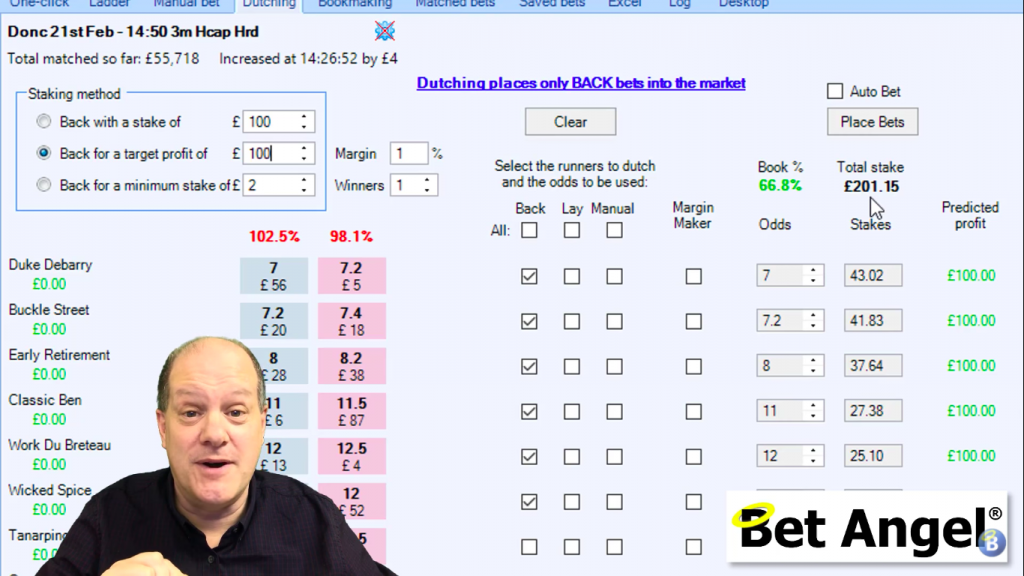
If I back at the current lay price on these selections, you can see in the image below that our total stake goes down.
Our plan is to place back bets in the market, but we’re going to back at the current lay price. This doesn’t place a lay bet, it still places a back bet, but at the current lay price. The current lay price is usually one tick up at decimal odds, but each tick adds extra profit or reduces your stake when dutching.
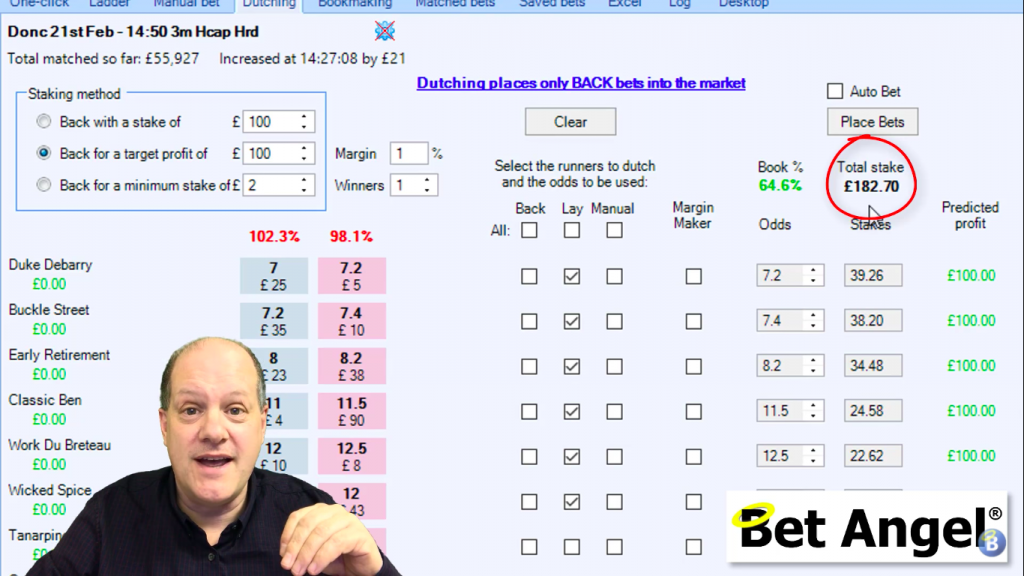
Now, those are going to be unmatched bets and naturally you need those bets to get filled. There are a number of ways of doing that, but essentially what you’re doing is you’re getting a better value bet by backing at the current lay price and asking for a price within the market.
If we go to use manual, you could actually ask for another price that doesn’t exist at this particular moment, somewhere slightly further out from the money.
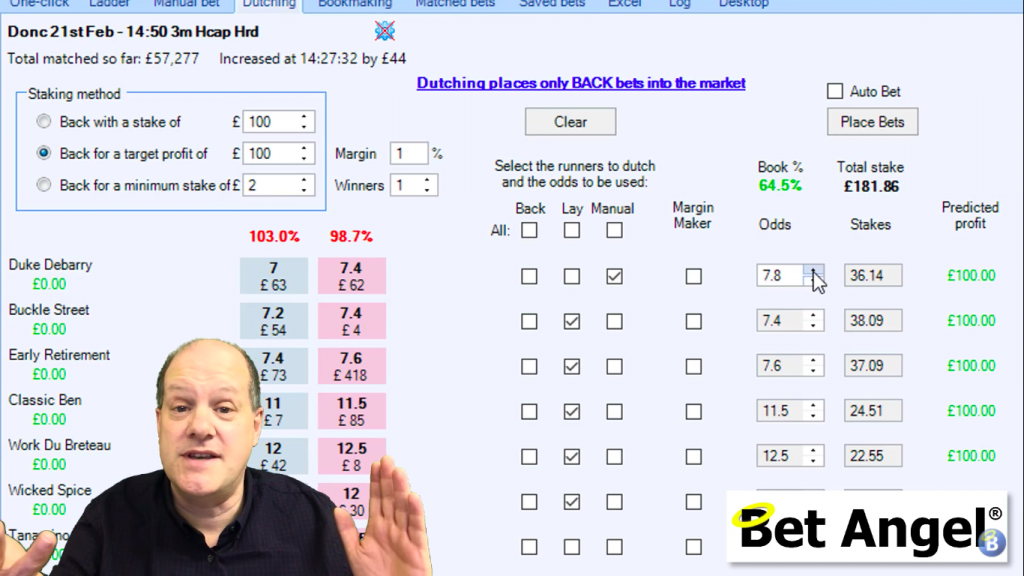
But by backing at the current lay price, you squeeze that little bit of extra margin out of the book, which will help you overcome the commission that you pay. I have hinted at this practice in the past, discussing ways that dutching can help you to overcome some of the commission issues and this is one way to do so.
By basically taking a chunk of the book and asking for the price within the market, you’re actually creating a little bit more value in it.
So that will come in two forms, firstly it will come in either a lower stake, if you’re backing for a fixed target profit. Then if we look at the back with a stake off, in other words, if we’re using a fixed stake rather than looking for a target profit then you’ll notice that the return that you get, the predicted profit column, that number goes up.
So whichever way you do it, you’re going to get slightly more money out of that particular position.
So why dutch?
Dutching is a good way of aggregating risk, but also achieving a better chance of a payoff, simply by offering bets to the market. Now, those will be unmatched bets when they reach the market, but you’ll find that overall that makes a huge difference because you a tiny edge here as you start to amplify over many, many markets which becomes a huge edge for you after thousands of markets!
Dutching is placing back bets into the market, but you can back at the current back price, you can back at the current lay price and you could back at prices that you nominate, that’s a good way of getting extra value from it.
But when you are dutching, you should think about how much of the field you cover. Are you covering just one little part of the field? Because then essentially your Dutch bet becomes an outright bet on that favourite or this small part of the field, it doesn’t deliver much value to you. You might as well just bet the favourite!
But obviously one of the great things about dutching is that you can actually back any one of ‘x’ number of runners. So here we’re expanding that list to quite a large number of runners and we’re giving ourself the capacity to be able to profit if any of those come in, which you can’t do on much smaller fields.
So there you go!
I hope that gave you a little further exploration into the dutching side of things. I hope that this has given you a bit of a grip on the sort of stuff that you can do and how you have use dutching.

